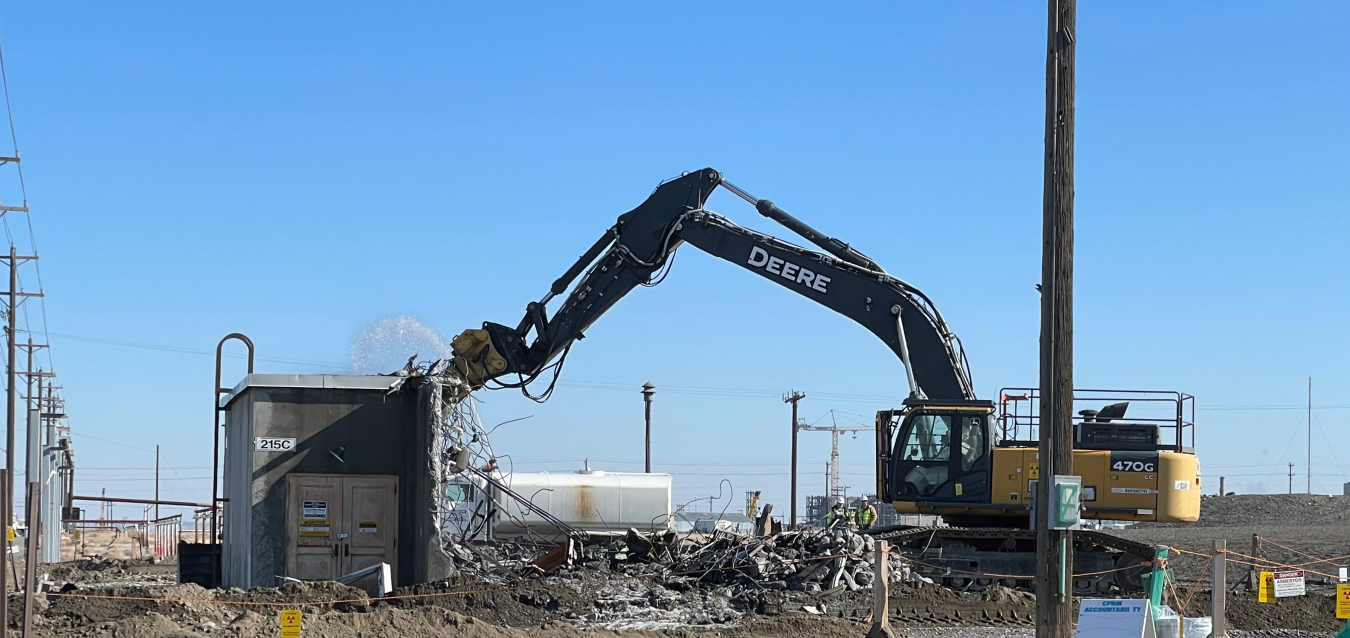Crews with EM Richland Operations Office contractor Central Plateau Cleanup Company (CPCCo) recently demolished two contaminated buildings that supported the Hanford Site’s plutonium-production mission during the 1950s and 1960s.
Office of Environmental Management
March 28, 2023RICHLAND, Wash. – Crews with EM Richland Operations Office contractor Central Plateau Cleanup Company (CPCCo) recently demolished two contaminated buildings that supported the Hanford Site’s plutonium-production mission during the 1950s and 1960s.
Located on Hanford’s Central Plateau, the demolished Gas Preparation and Solvent Handling buildings worked in conjunction with a research and development laboratory known as Hot Semiworks.
“These are not high hazard facilities,” said Andy Wiborg, EM team lead for the Central Plateau Cleanup Project on the site. “But it’s important to get these old facilities demolished when we can to help reduce our long term surveillance and maintenance costs.”

Hot Semiworks was constructed in 1951 as a research and test facility for separating plutonium from the uranium fuel rods processed in Hanford’s reactors. The facility was shut down in 1967.
The Gas Preparation Building provided compressed air for Hot Semiworks activities, while the Solvent Handling Building provided space for creating solvents and other liquid solutions.
Workers removed all tanks, piping and equipment from the facilities as part of project decommissioning in the 1980s. Last fall, CPCCo began demolition preparations, which included asbestos abatement, removing hazardous materials and disconnecting mechanical and electrical components. Crews then shipped debris from the demolished buildings to the Environmental Restoration Disposal Facility, Hanford’s onsite engineered landfill.
“It was a total team effort,” said Jeremy Hulquist, who manages demolition projects for CPCCo’s Inner Area End States organization. “I’m impressed with the communication and collaboration not only between the demolition workers, but also with our DOE customer and our engineering, safety, industrial hygiene and radiological controls organizations.”
To receive the latest news and updates about the Office of Environmental Management, submit your e-mail address.

